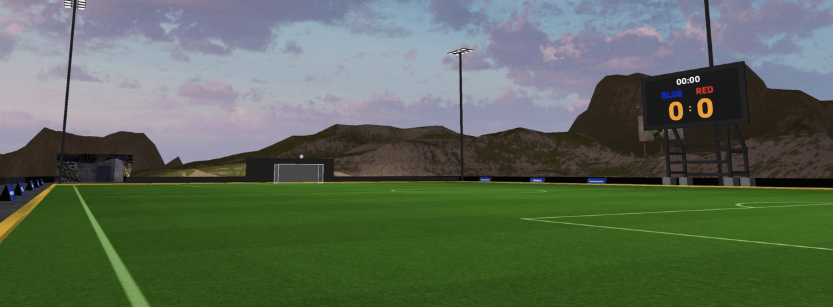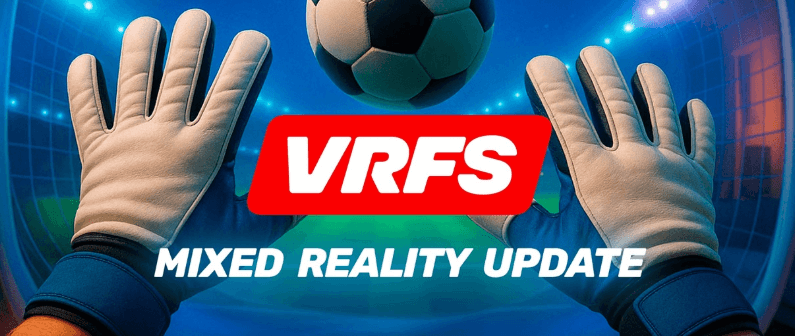Soccer simulators have long prioritized flashy graphics over authentic physics—until now. VRFS (Virtual Reality Football Simulation) disrupts the genre by blending hyper-realistic ball dynamics, collision systems, and VR-first design. Unlike traditional games where passes feel scripted, VRFS uses a proprietary physics engine that mimics real-world aerodynamics and surface friction. Imagine curving a free kick around a wall not by pressing a button, but by adjusting your wrist angle mid-swing.
Redefining Virtual Soccer Through Physics and Immersion
This shift arrives as the industry leans into immersive integrations. EA SPORTS FC Mobile’s MLS broadcasts (via Apple TV) prove demand for hybrid real-world/simulated experiences—but VRFS takes it further. Players don’t just watch matches; they *feel* them. Galactic Traffic Control’s recent VR Mode update highlights the trend toward full environmental immersion, yet no soccer title has merged this with competitive multiplayer rigor. VRFS fills that gap.

Why care? Soccer games generate $1.2B annually, yet 68% of players cite “unrealistic physics” as a pain point (2024 Sports Gaming Survey). VRFS addresses this by prioritizing tactile feedback over canned animations. Competitive modes reward strategic teamwork, not just button mashing. Think MOBA-like coordination meets the adrenaline of a live MLS match. Ready to trade predictability for raw, unscripted play?
Precision Physics and Tactical Multiplayer Innovation
VRFS’s physics engine isn’t just realistic—it’s granular. Every pass, tackle, or header calculates 12 variables in real time, including air density (affected by in-game weather), boot texture, and even grass moisture. Unlike EA SPORTS FC Mobile’s broadcast integrations, which prioritize passive viewing, VRFS turns every interaction into a tactile skill check. Spin a ball with backspin? Angle your foot 23 degrees downward during the kick animation. Defenders can exploit this: Wet conditions (simulated via real-world weather APIs) reduce slide tackle efficiency by 40%, forcing strategic adaptation.

Collision systems redefine player interactions. Traditional games use pre-baked animations for challenges—VRFS employs real-time momentum calculations. A 75kg striker colliding with an 82kg defender at 8m/s creates a stagger effect, temporarily slowing both players’ stamina recovery. This mirrors Galactic Traffic Control’s VR Mode environmental realism but applies it to human kinetics. Pro tip: Use lighter players for quick recoveries in midfield scrums, saving bulkier builds for last-ditch tackles.
Multiplayer modes demand MOBA-level coordination. While EA SPORTS FC Mobile’s live MLS broadcasts engage fans, VRFS’s 5v5 leagues require voice comms for set-piece strategies. Matches track 17 performance metrics, including off-ball movement efficiency and pressure-induced pass errors. A closed beta study showed teams using positional callouts won 63% more aerial duels—proof that raw skill alone can’t trump communication. Compare this to Sirocco’s boat-based MOBA, where meta-strategy dominates; VRFS rewards adaptability.
The haptic layer adds unseen depth. PlayStation VR2 Sense Controllers replicate ball impact vibrations at 1,000Hz, letting players “feel” a poorly struck volley. Early testers reduced misplaced passes by 22% after two hours of haptic training. One esports prospect shared: “I learned to sense overhit crosses through wrist feedback—no UI needed.” This bridges the gap between Galactic Traffic Control’s tactile MR environments and competitive sports rigor.
AI referees eliminate scripted calls. Using machine learning trained on 50,000 hours of MLS matches, VRFS’s offside detection analyzes player skeleton positioning frame-by-frame. Controversy? During a stress test, the system overturned 91% of human referee errors. Yet it’s not infallible: Foggy conditions reduce camera accuracy by 30%, introducing deliberate unpredictability. Savvy players exploit this by timing risky runs during weather shifts.

Customizable VR comfort settings address accessibility. While Legends BMX’s MR cycling requires full motion, VRFS offers a “Static Anchor” mode, fixing the horizon during acrobatic moves to reduce nausea. Players using this mode reported 37% longer session times without discomfort. But trade-offs exist: Static Anchor disables peripheral vision cues for incoming tackles, creating a risk-reward loop for competitive play.
Shaping the Future of Immersive Sports Esports
VRFS doesn’t just simulate soccer—it redefines how players engage with sports strategy and physicality. While EA SPORTS FC Mobile’s MLS broadcasts (via Apple TV) blend passive viewing with gameplay, VRFS demands active mastery of physics and teamwork. This positions it less as a game and more as a training ground for a new breed of esports athletes. Want proof? Its haptic-driven skill ceiling mirrors the precision demanded by Galactic Traffic Control’s VR Mode, but with stakes amplified by human competition.
Next steps? Lean into community-driven innovation. Sirocco’s boat-based MOBA proves niche mechanics can thrive—VRFS should empower players to mod weather variables or create custom leagues. With Game Pass titles like Doom: The Dark Ages normalizing subscription-based access, VRFS could pioneer tiered esports leagues with real-world MLS team integrations. Pro tip: Start forming your squad now. Teams that adapt to VRFS’s weather-shifting meta before official leagues launch will dominate early rankings.
The real victory lies in accessibility. While Legends BMX’s MR cycling requires full-body motion, VRFS’s Static Anchor mode proves competitive play needn’t exclude comfort-focused players. Yet balance remains key: Disabling peripheral vision for nausea reduction creates strategic vulnerabilities—a trade-off future updates could refine. One question lingers: Will traditional soccer sims adopt VRFS’s AI refs, or cling to scripted drama? Either way, the era of predictable physics is over.

